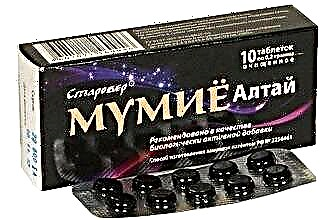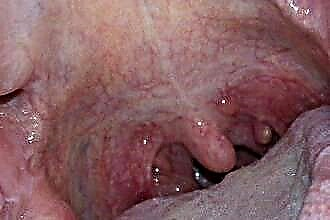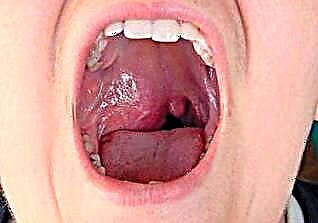In case of maxillary sinusitis, in addition to drugs that affect the entire body, agents that have a local effect on the air chambers and the nasal cavity are also used. Most often, there are medicinal substances produced in the form of sprays and nasal drops. However, experts recognize the effectiveness of such a method as turunda in the nose with sinusitis. They are used both in traditional medical practice and in folk recipes.
Turunda and how to make it
 Every good otolaryngologist in the manipulation room has a jar containing sterile tampons or turundas prepared by the nurse in advance. Turunda is a piece of bandage or gauze, twisted in a spiral into a fairly dense roll of gauze. Depending on where the turunda will be inserted, into the nasal passage or ear, as well as the age of the patient and the size of the nasal passages, the turunda can be made larger or smaller. In this case, the free tip of the bandage should stick out slightly from the nostril so that it can be removed without effort. Often, otolaryngologists also use homemade cotton swabs.
Every good otolaryngologist in the manipulation room has a jar containing sterile tampons or turundas prepared by the nurse in advance. Turunda is a piece of bandage or gauze, twisted in a spiral into a fairly dense roll of gauze. Depending on where the turunda will be inserted, into the nasal passage or ear, as well as the age of the patient and the size of the nasal passages, the turunda can be made larger or smaller. In this case, the free tip of the bandage should stick out slightly from the nostril so that it can be removed without effort. Often, otolaryngologists also use homemade cotton swabs.
Unlike store-bought hygiene products such as cotton swabs or women's cosmetic pads, homemade turundas not only absorb liquid, but also release it, making them indispensable for nasal lotions. In addition, the cotton swab is too small and stiff, and the cosmetic disc is too large.
It is not difficult to make a convenient blank of gauze and cotton wool at home:
- With clean hands, a small ball of cotton wool is torn off, fluffed up with fingers, and then compacted into an oblong stick. The length should be such that it protrudes from the nostril by at least 5-7 mm, so that you can easily remove it with your fingers.
- The size of the tampon can be changed by gradually adding and subtracting cotton wool. It is better to make several tampons of different sizes.
- The cotton base is wrapped with sterile gauze or a bandage in two layers.
Features of the use of turunda
Turundas for sinusitis are used to deliver drugs that have a local effect into the nasal cavity.
 They are more effective than sprays and drops, since they adhere tightly and evenly to a large area of mucous membranes, and also have a therapeutic effect on the accessory cavities and fistulas for several hours. Basically, for sinusitis, tampons are used with drugs aimed at the following effects:
They are more effective than sprays and drops, since they adhere tightly and evenly to a large area of mucous membranes, and also have a therapeutic effect on the accessory cavities and fistulas for several hours. Basically, for sinusitis, tampons are used with drugs aimed at the following effects:
- thinning mucus and facilitating its evacuation;
- pulling pus out of the sinuses, improving their drainage and ventilation;
- fight against viruses and pathogenic bacteria;
- reduction of tissue swelling and removal of the inflammatory process.
The ease of making tampons and their use for the treatment of sinusitis makes it possible to use them at home as the main or additional method of therapy, which gives a positive effect. To do this, it is enough to adhere to a few basic rules:
- It is better to make tampons from a sterile bandage and cotton wool.
- It is better to store finished workpieces in a sealed clean container (box, jar) to prevent dirt, animal hair, dust and pollen from getting on them.
- The patient should insert the flagellum with the medicine himself, correlating the depth of introduction and his subjective feelings. This will help avoid pain, discomfort and mechanical damage to the mucous membrane.
- Each swab is used only once and then discarded.
In the acute course of sinusitis with pronounced symptoms (high fever, purulent discharge, headaches, severe congestion of the nasal passages), you should not self-medicate, including using tampons.
An urgent need to go to the hospital, as maxillary sinusitis is fraught with symptoms that are dangerous to health and life.
The use of drugs with turundas
 Pharmacy remedies for sinusitis, which are injected into the nose with the help of tampons, are mainly ointments and solutions, which, when applied normally to the mucous membrane, will be partially removed from the nasal passages with outgoing secretions.
Pharmacy remedies for sinusitis, which are injected into the nose with the help of tampons, are mainly ointments and solutions, which, when applied normally to the mucous membrane, will be partially removed from the nasal passages with outgoing secretions.
Most often, Vishnevsky and Levomekol ointments are used, as well as Chlorophyllipt oil solution.
Regarding Levomekol, you need to consult with an ENT, since it is a local antibiotic. The procedure for applying ointments is as follows:
- Insert the turunda soaked in solution or ointment into the nasal passage. The patient lies with his head thrown back slightly.
- It should be kept there for half an hour - an hour, while the patient needs to breathe through the mouth.
- Then the same manipulation is performed with the other nostril.
- Do two reps per day.
Another effective complex remedy for sinusitis from pharmacological preparations is prepared as follows: Ektericide (10 ml), Naphthyzin (2.5 ml) and Hydrocortisone (1 ampoule) are mixed and shaken well. The resulting liquid is soaked in a cotton swab and put into the nose every day for 15 minutes. The patient needs to lie on the side from which the turunda is inserted. All of the above drugs are potent, therefore, before using them, it is necessary to consult an otolaryngologist who will calculate the duration of such therapy.
Folk recipes for mixtures for lotions
For mixtures and solutions used for lotions in nasal cavities, pharmacological preparations, as well as means of plant or animal origin, with a therapeutic effect, can be used.
 To make the manipulation as effective as possible, before starting it, the nose is thoroughly washed and cleansed of pus and mucus. The most common and proven folk recipes for the treatment of inflammation of the airways of the nose:
To make the manipulation as effective as possible, before starting it, the nose is thoroughly washed and cleansed of pus and mucus. The most common and proven folk recipes for the treatment of inflammation of the airways of the nose:
- With Vishnevsky ointment. Freshly squeezed onion juice, liquid or melted honey in a water bath, Vishnevsky ointment and aloe juice are taken in equal proportions, mix thoroughly. A tampon lubricated with the resulting mixture should be inserted into the nostrils for half an hour daily for two weeks. Decreases swelling and inflammation, which promotes healing with the use of conservative therapy, without puncture of the maxillary chamber.
- With household soap. One tablespoon of 72% laundry soap, melted in a water bath, grated on a coarse grater, is mixed with an equal amount of onion juice and black radish juice. The compress is kept for 30 minutes and is prescribed for the formation of purulent crusts during lingering sinusitis. For soap, you need to take the first grade and without various additives, for example, tar. It is not allowed to use toilet or bath soap for medicinal purposes, which contains fragrances and dyes.
- With honey. Warm fresh natural bee honey slightly for greater fluidity and combine with beet juice (1: 3). Flagella are inserted simultaneously into both nostrils, while the patient lies on his back. You can repeat the procedure several times a day. Promotes the evacuation of purulent secretions, facilitates the course of the disease. Not to be used by people with intolerance to bee products.
- With baking soda. Grind half a teaspoon of baking soda (sodium bicarbonate) with a teaspoon of sea buckthorn oil. Flagella moistened with a mixture are inserted deep into the nasal passages. The patient lies on his back with his head thrown back and holds the compress for about an hour. If you pinch strongly, then the procedure will be shortened. As a rule, after removing the drug, active discharge of purulent exudate and sneezing begins.
- With vegetable oil and propolis. Unrefined sunflower oil and sea buckthorn oil are mixed in equal portions, then propolis is added. To create the desired consistency, the mixture is heated to 40 degrees, after which it is allowed to cool to 20-25 degrees.The applications soaked in the resulting medicine are injected into the nose for 15 minutes.
Simple recipes from available ingredients
 Also popular among the people are recipes based on ingredients that almost every housewife has in the kitchen or pantry, as well as those that can be bought without any problems in a pharmacy or on the market:
Also popular among the people are recipes based on ingredients that almost every housewife has in the kitchen or pantry, as well as those that can be bought without any problems in a pharmacy or on the market:
- St. John's wort. 4 tablespoons of dried herb St. John's wort are thrown into a liter of boiling water, brewed, and then kept in a thermos for about 3 hours. Turundas are impregnated with cooled infusion and pushed into the nose. The patient lies on his back and periodically drips infusion with a pipette onto the outer tip of the tampon so that it does not dry out. St. John's wort has a strong antimicrobial and wound healing effect.
- Cyclamen root. Used as a tuber bought on the market, and the root of a flower that stands at home on the windowsill. Juice is extracted from it by rubbing on a fine grater and then squeezing. In this case, care should be taken, since cyclamen juice in a concentrated form is poisonous and dangerous to humans. A little juice is diluted in a glass of boiled warm water. The workpiece moistened with the solution is inserted deep into the nasal passages for 5 minutes in the morning and evening. It is undesirable to store the squeezed juice, so it would be more correct to cut off a piece from the tuber stored in the refrigerator and make a new medicine for each dose.
- Garlic. Choke with garlic 2-3 peeled medium-sized cloves. The resulting substance is wrapped in a gauze flagellum and inserted into the nostrils alternately for 10 minutes. With a strong burning sensation, you can shorten the procedure. Sometimes, for the best effect, a little vegetable oil is added to the minced garlic. Garlic very actively cleans mucous membranes and removes pus. The disadvantage of this method is an unpleasant, pungent odor.
- Horse chestnut fruit. Keep the chestnut in boiling water for an hour, then peel and cut out oblong pieces to fit the size of the nasal passages. The sticks are wrapped with gauze in one layer and inserted alternately into each nostril for 5 minutes. Soon after, exudate begins to come out abundantly, so it is necessary to rinse with 0.9% saline solution. Do these manipulations 3 days 2 times.
- Vegetable collection that can be prepared in advance. Calendula flowers, St. John's wort and lemon balm herb, horseradish rhizomes, plantain and eucalyptus leaves are mixed in equal proportions. Pour one tablespoon of the resulting mixture with vegetable oil (70 ml) and cook in a water bath for about 5 minutes. After that, the herbal oil is infused for a month. Then, additionally, 2 g of flower bee bread and bee glue (propolis), as well as 1 g of menthol, are added.
 After 10 days, the medicine is ready for use. The moistened flagella are placed daily for 40 minutes. Can be used for chronic sinusitis.
After 10 days, the medicine is ready for use. The moistened flagella are placed daily for 40 minutes. Can be used for chronic sinusitis. - Mumiyo. Crush a tablet of mummy (0.2 g) and mix with 10 g of camphor oil. Bet for 15 minutes 3 times a day.
- Bay leaf. Boil 2 packs of bay leaves in half a liter of water for 10 minutes. This broth can be used to wet tampons (3 times for 30 minutes), as well as to rinse the nose.

 After 10 days, the medicine is ready for use. The moistened flagella are placed daily for 40 minutes. Can be used for chronic sinusitis.
After 10 days, the medicine is ready for use. The moistened flagella are placed daily for 40 minutes. Can be used for chronic sinusitis.

